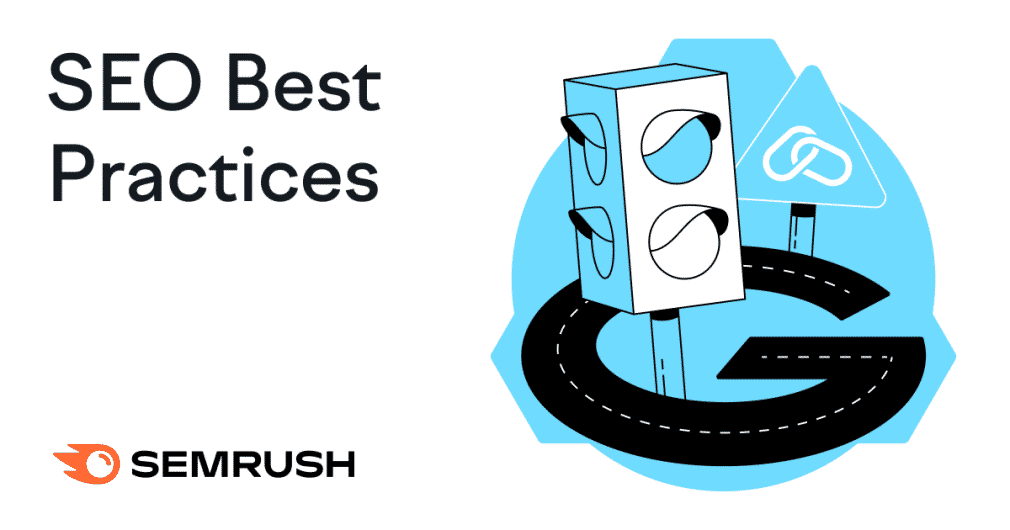
What Are The Best SEO Practices You Should Follow in 2022? | SEO NOW!
Do you want to be on the first page of google? The sad truth, if you are not ranking in the top 10 results on Google for your target keywords, you won’t get much traffic and leads. According to HubSpot, 75% of Google searchers happen on the first page of search results. That’s why it’s essential to rank on the first page of Google or any search engine.
With Google algorithms being consisted updated, it’s hard to keep up. However, there are a few useful strategies you can follow to rank higher on Google. If you don’t get the basics right, you won’t have a chance to rank on page 1 of Google. Here are the best SEO practices you should follow in 2022 to increase its visibility in Google search.
ADJUSTING YOUR WEBSITE CONTENT WITH SEARCH INTENT
Search intent or user intent is the purpose every user has behind every search query they put into Google. Understanding what people look for when they are using the search engine is Google’s priority. Pages that rank #1-10 on Google have all passed Google’s search intent test. For example, take a look at the search results for “how to make pasta.” For that keyword, the top search results are mostly blog posts or video content, not eCommerce stores selling pasta. It’s essential for Google to understand that people who are typing that specific keyword are looking to learn, not to buy.
On the other hand, the best search results for keywords like “buy pasta” are mostly from eCommerce stores. Google understands that people who are typing that specific keyword are most likely to want to buy something. That’s why the top results don’t include links to any recipes.
If you would like to rank your website on the first page of Google in 2022, you need to know that the concept of search intent in creating your website content is essential.
There are four main types of search intent for Google:
Informational: When the person is looking for specific information in search by typing questions in Google like “what’s the best SEO practices 2022?” which provides instant results in search.
Navigational: When the person is looking for a specific website or app by typing keywords such as “Facebook,” “Google my business account,” or “Amazon login.”
Commercial: When the person is looking for a specific product but didn’t make the purchase decision yet. For example, searches such as “best gifts for her” and “best drones to buy” are all commercial keyword searches.
Transactional: When the person is looking to buy a specific product or service. For example, “buy Mavic pro 2,” or “buy a MacBook pro.”
To rank higher on google, you need always to know what search intent you are going after while creating content for your site. Create content that helps with the search intent of your target audience and customers.
WRITE AN ORIGINAL TITLE TAG AND META DESCRIPTION
Your page title and description are two of the most important meta tags on your website.
1. Title Tags
Title tags are clickable link headlines to your website that appear in search results. Title tags are essential for SEO rankings. There are no hard rules regarding the length of title tags. Usually, the recommended size of the title is about 70 characters, including spaces. For the best search engine optimization, try to keep the title length to about 65 characters. You can go as much as 70 characters in total, but try not to exceed that.
While creating title tags, remember to:
- Include target keywords.
- Match the search intent.
- Do not duplicate title tags.
- Avoid using too many keywords.
2. Meta Descriptions
Another most crucial meta tag is the meta description. The meta description is simply a brief summary of a website page that google displays below the page title.
Meta descriptions help influence click-through rates. The length of the meta description should be somewhere between 150 to 160 characters, including spaces. Make sure you provide an accurate description of your website page content using no more than 160 characters.
While writing your meta descriptions, remember to:
- Write unique meta descriptions for each page.
- Use action-oriented copy.
- Include your target keywords.
- Match search intent.
- Provide an accurate summary.
OPTIMIZE YOUR IMAGES
Images and graphics play an essential role in the user experience of customers that visit your website. Web developers, content writers, and creators spend a lot of time selecting the right graphics to improve their blog posts, product pages, and others on their websites. However, even more, important is to optimize the images on the website. Optimizing the images can improve the site’s overall SEO and boost organic traffic. Here are four things you can do to optimize images on your website.
1. Choose the Best File Format | JPEG vs. PNG. vs. WebP
First, you need to optimize image size to improve the speed of your site. The most common graphic file formats are JPEG, PNG, or WebP. Let’s look at the difference between JPEG vs. PNG. vs. WebP. The most popular image formats on the web are definitely JPEG and PNG. Both formats use different compression systems, which affects the overall file size.
Looking at all the different formats, definitely the most common is JPEG. However, it would be a mistake to use a JPEG format for your website. While JPEGs look great, PNGs are best for images that have text, line drawings, etc.
WebP is another option, which Google breaks down here. According to Google, ” WebP is a modern image format that provides superior lossless and lossy compression for images on the web. Using WebP, webmasters, and web developers can create smaller, richer images that make the web faster. WebP lossless images are 26% smaller in size compared to PNGs. WebP lossy images are 25-34% smaller than comparable JPEG images at equivalent SSIM quality index.”
Here is the Google guide explaining more about the WebP format.
2. Compress Your Image
The larger your image size is, the longer your website will load, which is why it is important to compress your images before uploading them to the website. However lucky for you, there are many free tools to help you compress your images, such as TinyPNG, ImageOptim or ShortPixel
3. Provide Alt Text for Images
Adding alt text to images and graphic files is still a necessary step in on-site SEO. Adding alt text to images improves your SEO and helps search engines such as Google better understand the images on your website.
Here is what Google suggests when writing alt text:
“When choosing alt text, focus on creating useful, information-rich content that uses keywords appropriately and is in context of the content of the page. Avoid filling alt attributes with keywords (keyword stuffing) as it results in a negative user experience and may cause your site to be seen as spam.”

